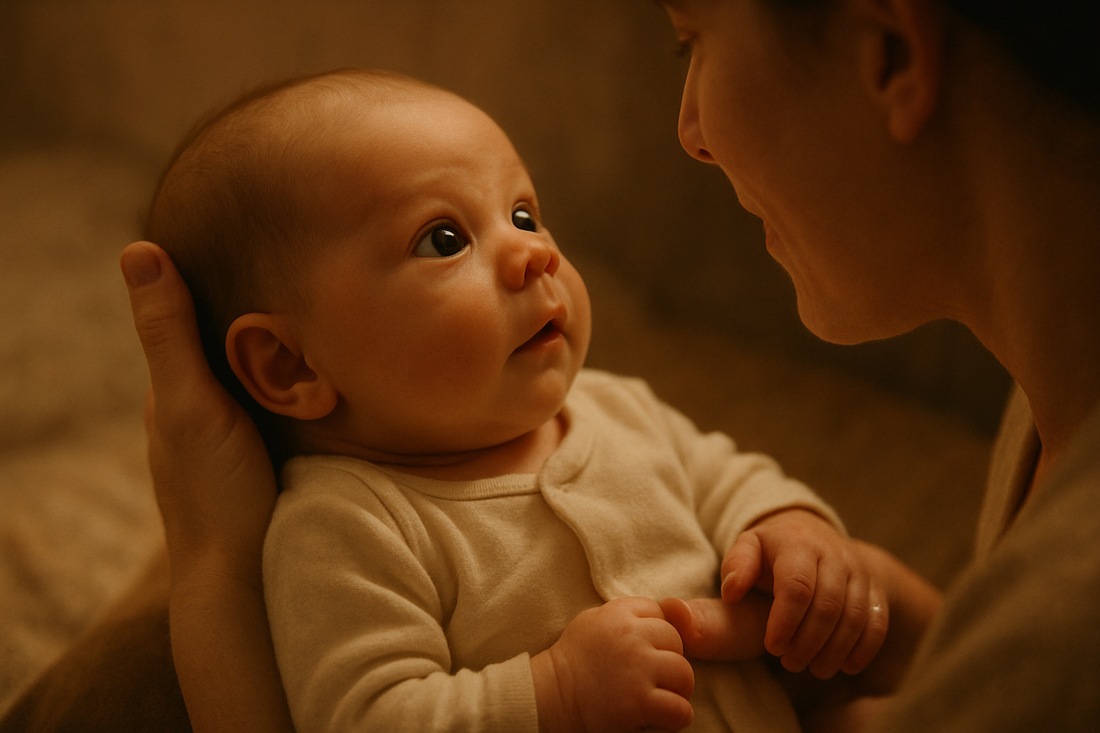
Screens in the First 3 Years: What Science Really Says
Share
The first three years of life are a whirlwind of growth. Babies and toddlers are learning how to connect, communicate, and explore. In this window, the brain builds more neural connections than at any other stage of life. But what role should screens play - if any?
While screens can feel like a lifesaver for busy parents, research from Australia and New Zealand shows that too much exposure in these early years may disrupt sleep, delay speech, and reduce bonding time. Here’s what the science says, and what parents can do instead.
1. Why faces matter more than screens?
From birth, babies are wired to seek faces, voices, and touch. These human interactions build the foundation for empathy, trust, and language.
In Australia, a longitudinal study of 220 families found that toddlers (12-36 months) exposed to more “screen noise” had fewer conversational turns with caregivers. This reduction in back-and-forth exchanges - known as “serve and return” - is crucial for brain and language development.
Takeaway: No screen can replace a parent’s face, a sibling’s giggle, or a caregiver’s soothing voice.
2. The link between screen time and speech delays
Language development thrives on back-and-forth conversation. But when screens replace those exchanges, children may experience slower vocabulary growth.
New Zealand’s Growing Up in NZ study, which tracked over 5,000 preschoolers, found that greater early screen exposure was linked to lower language, educational and social functioning outcomes later on. Canadian and US research backs this up, but NZ data makes it crystal clear: screen time in early years matters.
Takeaway: The best “language app” is you-talking, reading, and singing to your child.
3. Sleep and sensory overload
Bright, fast-moving visuals can overstimulate little brains, making it harder for toddlers to fall and stay asleep. Exposure close to bedtime is particularly disruptive.
The Sydney Children’s Hospitals Network warns that excessive screen use is linked with disrupted sleep patterns, vision strain and sedentary behaviour. Poor sleep in the early years can impact growth, mood regulation and learning later on.
Takeaway: Bedrooms should be screen-free zones—bedtime stories beat bedtime shows.
4. Practical tips for parents (backed by AU/NZ guidelines)
- Under 2 years: Both Australia’s 24-Hour Movement Guidelines and New Zealand’s Ministry of Health recommend no sedentary screen time, except for family video calls.
- Ages 2–3: If you do use screens, limit it to under 1 hour/day of high-quality content, and watch together.
- Replace, don’t just remove: Have simple “go-to” alternatives - stacking blocks, sensory play, or even joining you in the kitchen with safe utensils.
Conclusion
Screens aren’t inherently “bad,” but in the first three years, less is definitely more. These early moments of connection and exploration shape who your child will become. By keeping screens in check, you give them the best chance to thrive in speech, sleep, and social bonds.
Further Reading & References
- Australian Institute of Family Studies: Too much time on screens?
- Sydney Children’s Hospitals Network: Negative health effects of too much screen time
- Mary Brushe et al. (The Hospital Research Foundation, Adelaide): Study on toddler screen noise and interaction
- Growing Up in New Zealand: Screen time and preschool development
Every minute away from a screen is a chance to grow, connect and discover.
